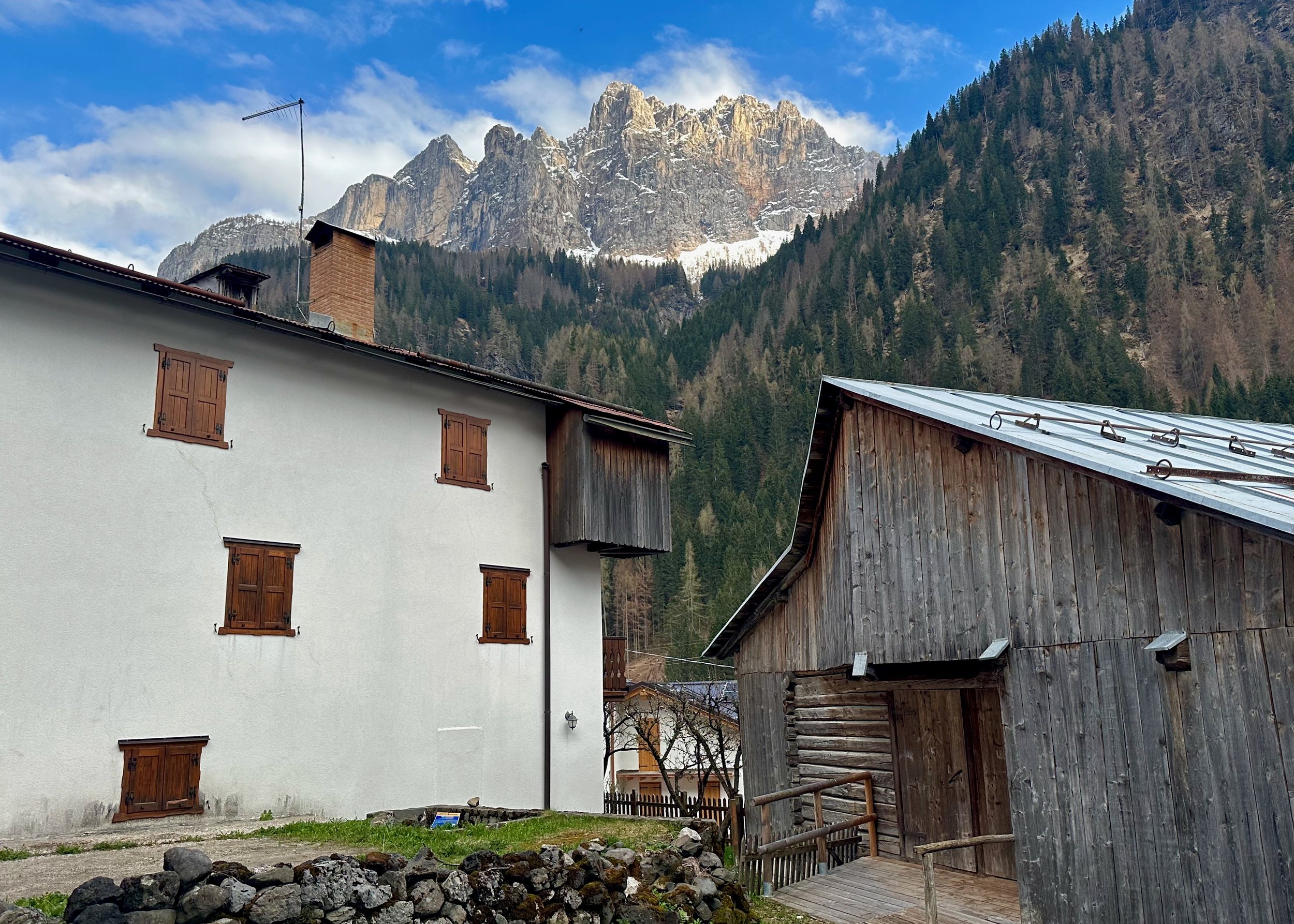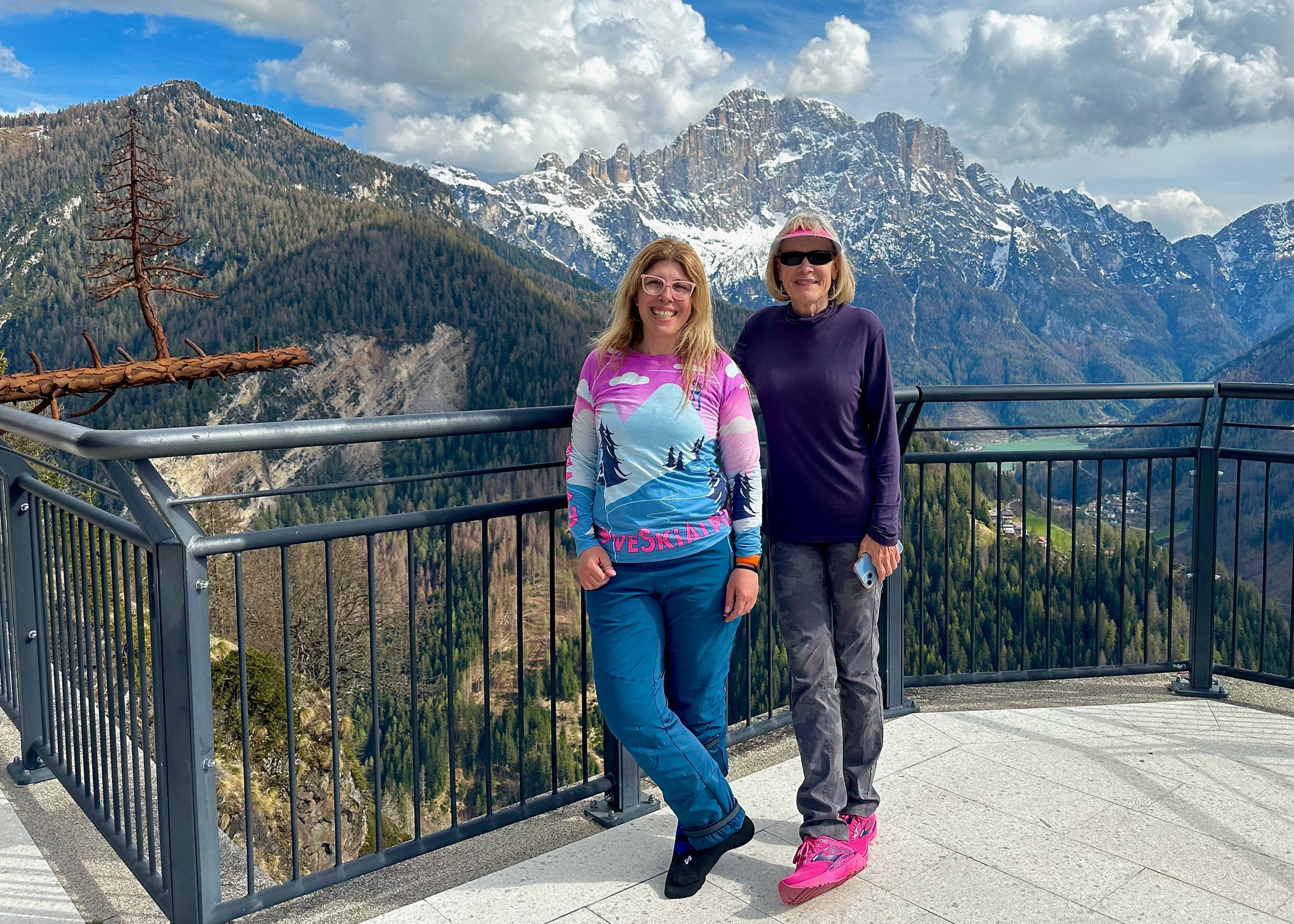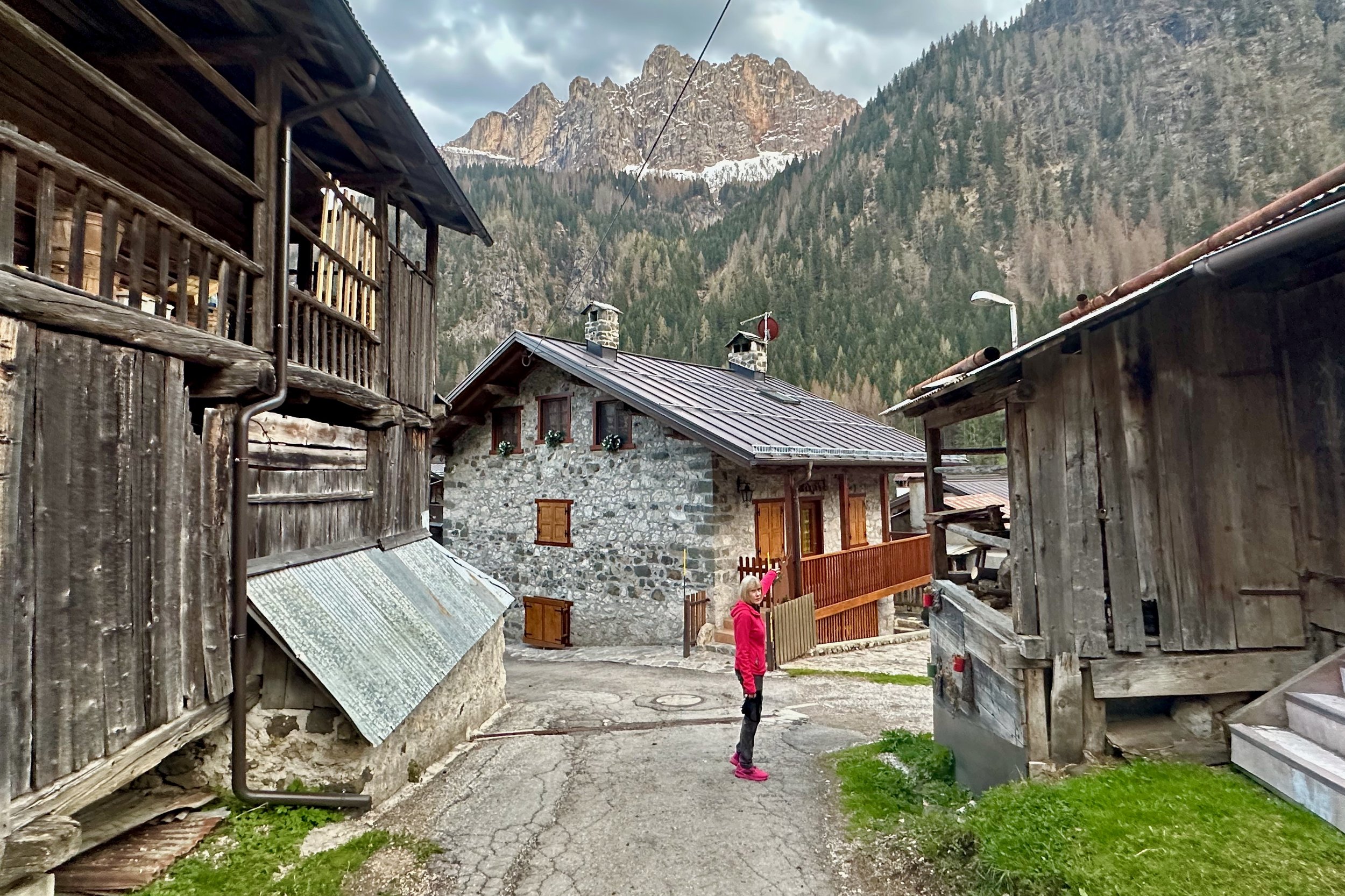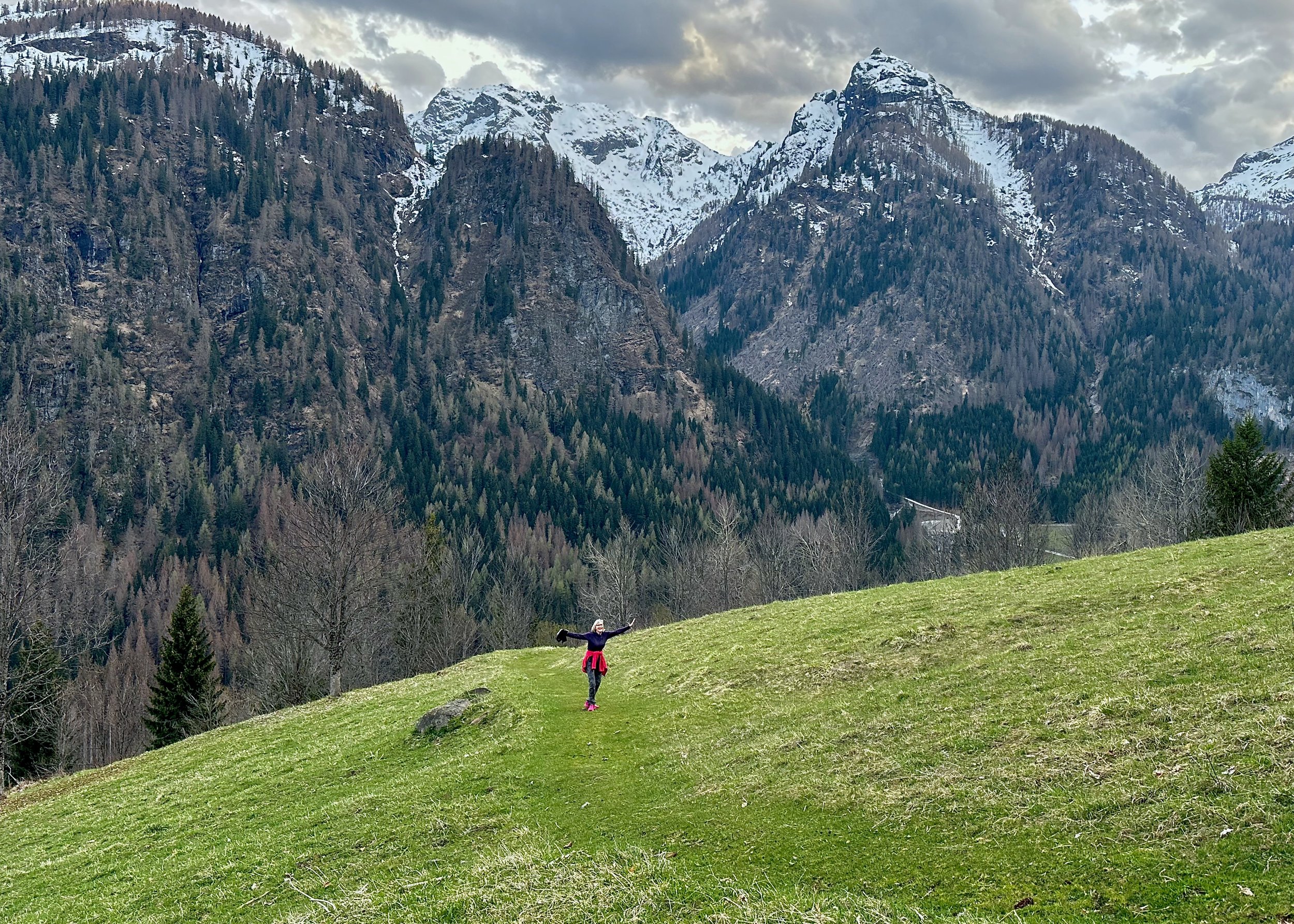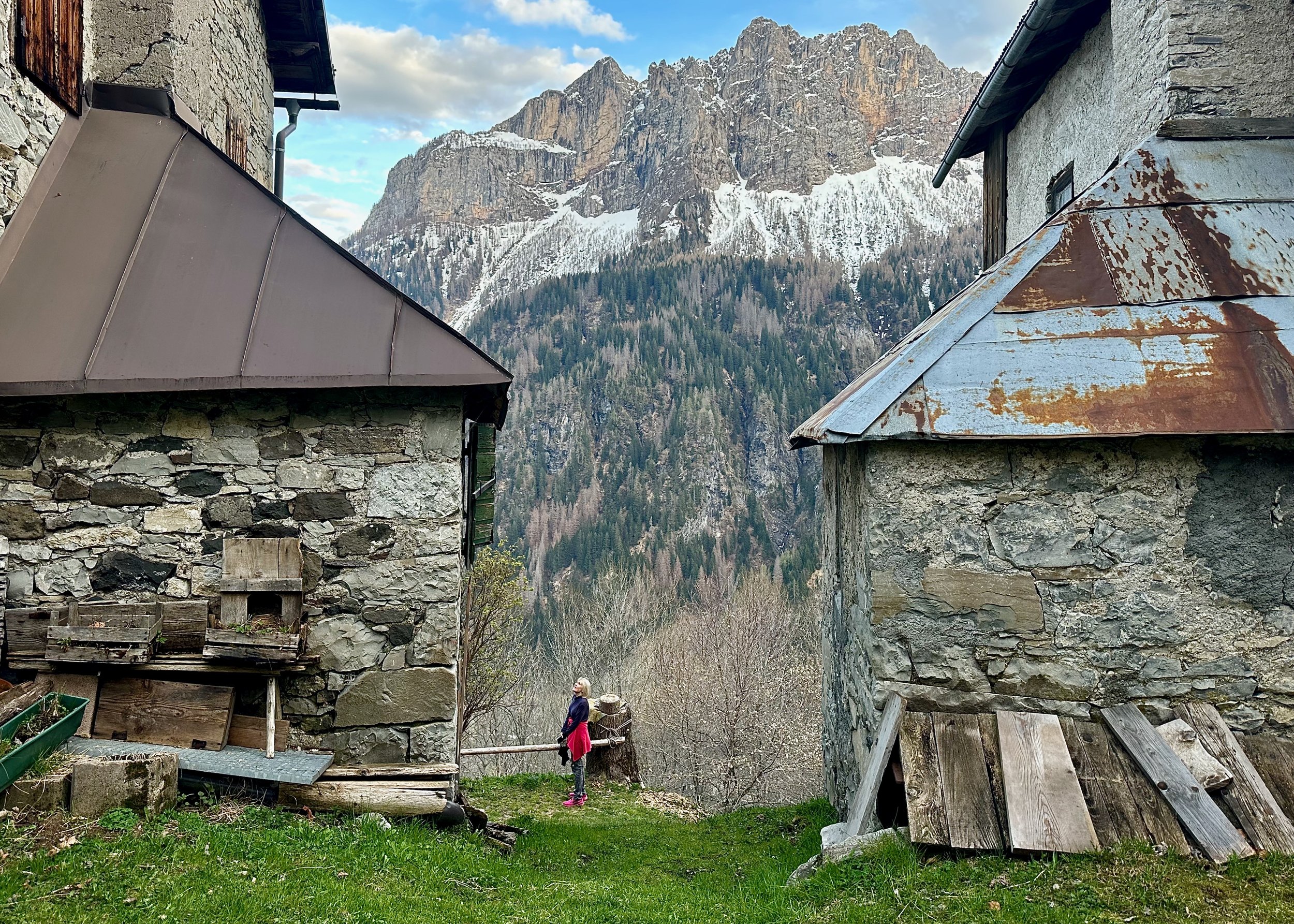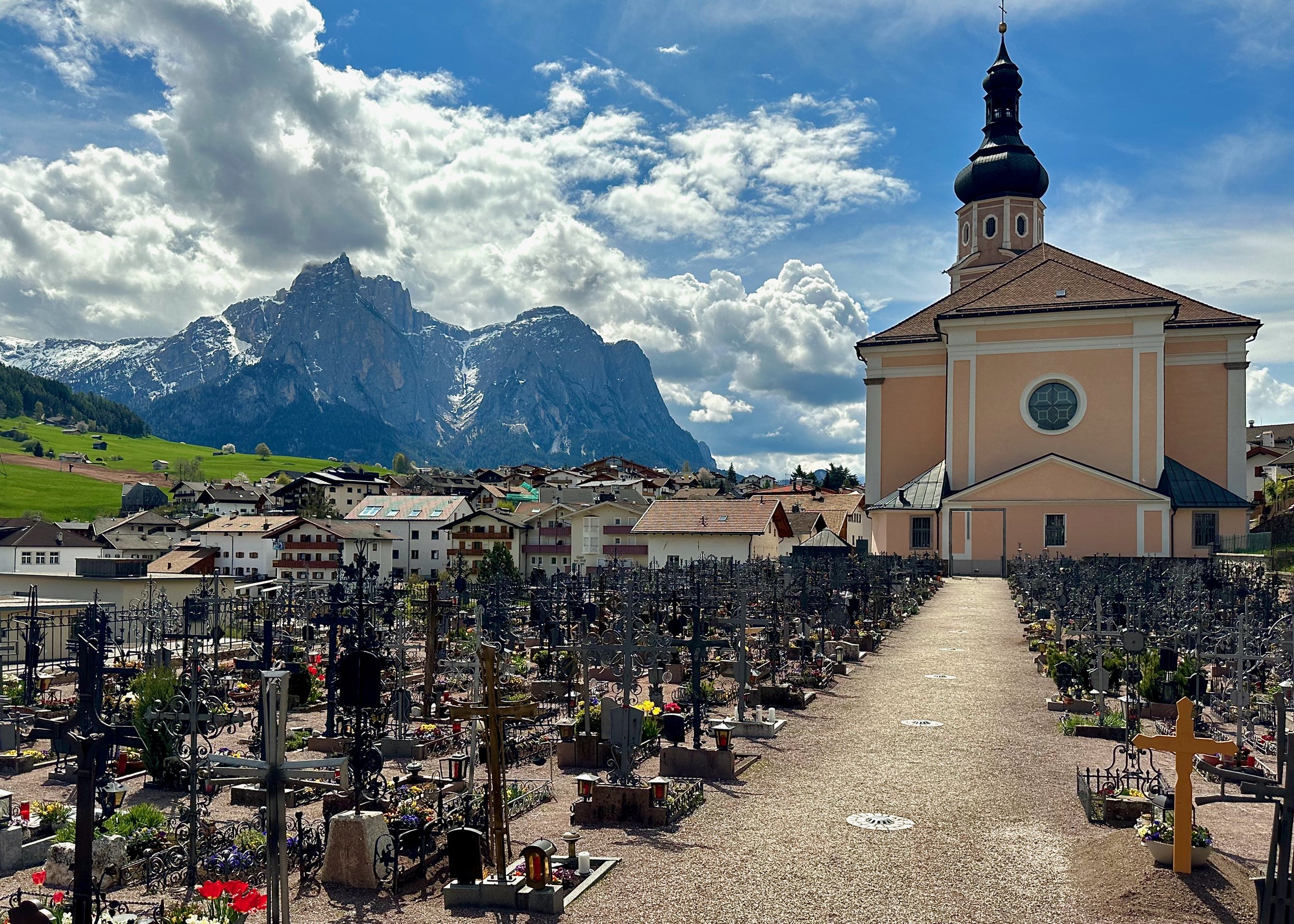#11 - The Dolomites
The next “fun thing” on our trip to Europe was a visit to one of the most beautiful mountainous areas anywhere. I had driven through the Dolomites in northern Italy many years ago, but Karen had never been there. It was a ‘must-return’ place for me, and she loves mountains even more than I do, so off we went through Austria and into Italy in our little blue Fiat.
What are the Dolomites?
Located in the north eastern part of the Italian Alps, The Dolomites are an area of uniquely beautiful mountains, known for their craggy, colorful rock peaks.
In 2009, the World Heritage Committee added the Dolomites to the World Heritage List, citing the beauty of their unique landscape and geological features. Their name (Dolomiti, in Italian) is taken from French geologist Déodat de Dolomieu, who studied these mountains in the late 1700s and was the first geologist to distinguish dolomite from limestone. They were originally called “The Pale Mountains”.
This part of northern Italy is an interesting mix of Italian and Germanic cultures. The architecture reflects more Swiss, German, and Austria influence than Italianate. German is commonly spoken in this area, and signage is commonly written in both languages.
We drove through fog and light rain on our way south from Salzburg. We got our first glimpse of the Dolomites through the clouds near the town of Dobbiaco, Italy.
A few miles later, as we drove into the city of Cortina D’Ampezzo, the sun was starting to break through the clouds and the Dolomites provided a beautiful backdrop.
Fun Fact: Remember the original Pink Panther movie (1963)?
Cortina D’Ampezzo was one of the shooting locations for that iconic first of the Pink Panther films, starring Peter Sellers, Claudia Cardinale and David Niven.
Our lodging for the next two nights was the most unique and memorable of the whole trip. Get this — the house is over 400 years old. Yes, it’s been updated, refurbished, re-sided, etc. but the bones of the house date to the around 1600. It’s located in a village called Sottoguda-Palue in the Territory of Rocca Pietore. The photo below shows the valley and the string of villages that lead up to where we stayed.
The bed had several layers of thick blankets.
Our hosts were Danilo and Jasna. Danilo grew up in this ancient house and has deep roots in this valley. His wife, Jasna, is from Croatia, but seems to have become “Italianized” in many ways. Unfortunately, Danilo was off working in a town over 40 miles away and we never saw him. But Jasna was wonderful to us. She greeted us warmly and took a lot of time to tell us all about the village, about these really cool old houses, and about her family’s life “in the middle of nowhere”, as she put it.
The Dolomites, while definitely a tourist attraction are fairly remote by European standards. There aren’t any large cities nearby and springtime is kind of quiet. Locals are hard-working people trying to scratch out a decent living by doing whatever they can. Danilo has a good job with the forestry service, but a recent promotion has put him in an office job pretty far away. One of their daughters chose to go to a high school in the town where her dad works because many of her friends were going there and she thought it to be a better school. So Danilo got an apartment there where the two of them stay during the week and come home on weekends. Mom stays in the house with the younger child. They’re making it work.
Jasna was so nice to us. She brought some home made wine (which Karen says was delicious) and surprised us with a hot risotto dish waiting for us when we returned home one night.
Just like breakfast at home.
This over-the-sink cabinet design is genius. Wash your dishes, put them away, and let them drip-dry over the sink!
Here’s a video tour of the house we stayed in — filmed and narrated by Karen Date, using our new GoPro camera that we got from our kids as a 70th birthday present! (Note: No sound for the first 49 seconds.)
We stayed in the the Village of Sottoguda-Palue. Ours was one of the very old houses that have been made-over and updated (see the ones farther down by the road) and others have retained most of their orginal look.
During our one full day in the area, we choose to do a little road trip loop that is famous among both skiers and serious cyclers called the Sellaronda. Since we were there at the tail end of the ski season, we were able to see both biking and skiing happening at the same time. Sellaronda a 51.5 kilometer bicycle route with a total ascent of 1691 meters. 25.4 kilometers of the tour are uphill — REALLY uphill. And the downhills are REALLY downhill. One pair of bikers passed us on twisty-turny downhill stretch and quickly went out of sight ahead of us . . . and we were going over 40 miles per hour!
Rifugio Marmolada is one of the system of more than 1,000 rifugios (refuge, or shelter, in English) in the Dolomites. They range from small huts to large hotel-like rooming houses. Hikers and climbers can find good food and a place to sleep at a reasonable price, in what are invariably visually stunning settings.
Here’s where we had our lunch. Not a bad place to eat a sandwich.
Here’s another video (shot and narrated by Karen Date) that shows you what it’s like to drive the twisting mountain roads of the Sella Ronda bike route through the dolomites. The new GoPro does it again!
The town of Colle Santa Lucia
The “dead tree” in the photo above is, in fact, a unique sculpture, only 3 years old. It’s called “Challenge”. The artist is Valentino Moro. The previous evening, our host, Jasna told us about a terrible storm in late October of 2018, called the “Vaia” storm which she said was “ a hurricane”, that blew through this area and caused the destruction of millions of trees on these mountainsides. (Read more about the Vaia Storm HERE.) A quote from the plaque near the sculpture: “Poised between the earth and the sky, a severed trunk, sturdy and gnarled stretches out into the void. A new life, a larch, rises from the branch of the stunned stem, symbolizing the triumph of the instinct to survive in every condition and circumstance.”
Looking at dead-tree art is a quiet and lonely pursuit, so after a few minutes, Karen latched on to the only other human in sight (other than the photographer). This friendly woman had just stopped by to take in the view of some of “her mountains” after spending the day skiing on some of the runs that were still open. She was so friendly, and loved talking about living in this amazing part of the Alps.
When we got back to our village, the sun was already going behind the mountain tops. But Jasna had told us about a nice hike up to an old village and we decided to try to make it there and back before dark. The hiking trail was fairly steep in parts, but we made it up to Antico Villaggio Sofedera. We found a cluster of old houses — Some that look lived in (but nobody home), some abandoned, and a few that were just crumbling walls.
You can have “The Hills are Alive” moments even when you’re not in Salzburg. The Italian Alps have their own music.
Our stay in the Dolomites was fantastic, both for the scenic beauty and for the people we met who make the area their home. After two nights in our historic mountain home, we headed southward through the foothills toward Verona and the Veneto.
But first, one last stop for Kaffee und Strudel in the Dolomites in the town of Castelrotto (Kastelruth) .
This cemetery in Kasteluth is one of the most ornate we have ever seen. The metalwork is incredible, the photos capture moments in time and they often include stories of the departed.







